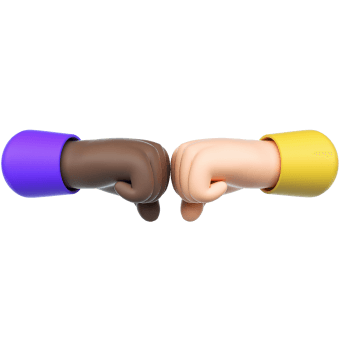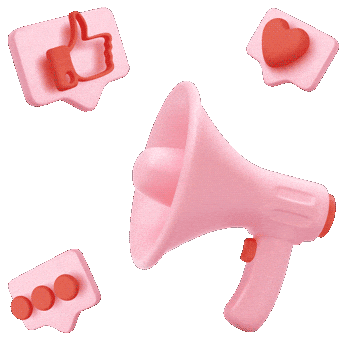How to trim social targeted ad cost

Sourcing traffic on social media can be tough; but it’s also very engaging and profitable—given you do everything properly.
To avoid wasting your budget and make targeted ads on social networks more cost-efficient and performing, you vitally need knowledge and experience. In this text, we will share some insights with publishers, entrepreneurs, and marketers who know a thing or two about setting social advertising; also, we will ask experts and describe some cases.
How social ad prices form
Marketers believe there are a bunch of factors that may affect social media advertising costs. Let’s explore each of them.
- Subject. The simpler and more obvious the subject, the less the ad will cost you. In this context, an ad of children’s products would cost much less than a property sale ad. That said, it’s widely believed that the stronger the competition in a vertical, the higher the ad prices.
- Proper definition and segmentation of the target audience. If you show ads to relevant users who click on your banners, then the costs of showing ads to non-interested users approach zero.
Margarita Tkachenko, MARTKA marketing agency: “To ensure better and more accurate targeting, filter out irrelevant audiences. When setting your ad campaign in the account, you can not just select an audience by interest but also exclude some fields of interest. Moreover, you can select intersecting interests to set up the audience even more accurately. You should also rule out high-cost formats. For instance, some feed ads can be times cheaper than Stories ads. Pay attention to it and edit ad spaces timely.“ - Audience quality. It’s recognized that PC users have a higher value than people consuming content on their mobile devices—mostly because people purchase more often when using PCs than mobile gadgets; at the same time, school-age users are not of much interest as their solvency is very questionable. You need to test all this in your ad campaigns.
- Ad content. Everything ad quality comprises: attention value, consistency between creatives and the promoted product.
- Impression frequency (how many times the same person sees the ad). If you show a person the same ad, this may give rise to banner blindness—which means they will stop noticing your ad and you will finally waste your money. Besides, a user may knowingly hide such ads.
If your ad’s impression frequency is too high, you may want to change the creative or visuals, or even pause the ad. - Ad destination. Instead of leading people straight to the advertiser’s website, you may invite them to take a survey and get a discount first. Going this way, you will capture more audience data and stimulate people to make a purchase.
- When you set an ad campaign, the system will ask you to specify the minimum and the maximum amount you are ready to pay for the ad. Based on the price range, the social network will decide–by means of kind of an auction—what audience to show your ad to, how often, and where.
- Season. Holidays always stir up competition in the market; thus, showing ads in such a prime time may be more expensive. Define the highest engagement period for your vertical and audience, and schedule impressions accordingly. How do you define it? We have one word for you: testing.
Ad optimization: important things to know
Optimization of advertising costs always goes hand in hand with analyzing campaign results. Make sure you continuously monitor which ads perform better, and which worse. For instance, the results may show that the audience of a certain age group is beyond the target scope: knowing this, you need to stop showing ads to such users. Having learned all the insights, re-configure the campaign.
Remember that the lead cost may change with time in the same campaign. Regularly inspect the running ads.
Vladimir Plotnikov, SMM Manager at REG.RU:
“To figure out how to reduce spend on social media ads, you need to define the ad’s prime cost. Here are the most common goals of promotion:
– increasing product awareness (focus on reach)
– registration of new users or new orders (also from existing customers)
Let’s start with reach-focused campaigns. Most publishers use the tried-and-tested strategy where they first target a small audience and then scale it up, expanding the reach. Once any of the metrics deteriorate, they need to find ways to optimize them. How to? Just disable underperforming targeting settings (demographic, interests, device type, etc.).
Alternatively, you may lower the CPM (cost per thousand impressions) rate: your spend on the campaign will fall, but the pace of showing will decrease as well, resulting in a lower monthly reach.
Now, let’s talk about conversion-focused advertising campaigns. This philosophy implies that we focus on traffic volumes and conversions, not reach. Thus, if traffic converts poorly or we’re not satisfied with the cost per conversion, we begin to optimize our campaign. And what we need to enhance is conversion rate, CPC, cost per registration or order, and general ad campaign settings.
Sometimes, appropriate modifications of the landing page or ad may reduce the cost per lead by 10 to 20 percent, or even more. Always keep track of—and timely optimize—your conversions. A/B testing for the win! And once you’re sure conversions feel great, start configuring ad campaigns.
Let’s assume you’re handling a cold audience: low conversions, pricey leads. Remedy? Warm up the users. For instance, compile a list from those who viewed your video and then start a retargeting ad.
If you interact with a warm audience and your CR is nice but you don’t like the CPL, a safe move is to narrow down the audience: just rule out the segment that converts the worst.”
Reducing Facebook advertising costs
On Facebook, publishers can go with one of the following models: CPM and CPC.
Vladimir Plotnikov: Quite often, CTR can have a huge impact on CPC. The higher CTR, the lower cost per click you can set—without losing traffic. To boost CTR, improve your ad’s quality: design a fancy creative or compose some catchy phrases. A/B test everything you can and pick out the most efficient ads.
Test various payment models. If a creative’s CTR is high, the CPM model may be times more cost-efficient than CPC—delivering the same reach.”
- Facebook allows optimizing ad campaign costs. Read this and this to learn how to set it up. Basically, Facebook has the ad auction and asks you to trust its algorithms and let them set the target action price automatically.
- Set up the analytics tool called Pixel to track user behavior and help Facebook find the most relevant audience for you. Pixel can also help you set up retargeting. Retargeting can shave the cost per click, since you will show your ads to potentially interested users—for instance, those who have already visited the advertiser website, viewed some products, or responded to similar ads earlier. To learn more about configuring retargeting on Facebook, read this material.
- Find warm users (e.g. rivals’ audiences) with Lookalike Audiences. We described this precious tool in this article.
- Use Facebook’s Ad Relevance Diagnostics. This tool will help you improve performance and cut your ad spend.
- Do not show your general ads to existing customers. You’d better create something special for those who already trust and know your brand.
- Remember that users sometimes only specify their interests during signing up to Facebook, and never update them. Thus, if you show ads to people with interests that are no longer relevant, your ad campaign may turn completely inefficient.
- When choosing a placement, try Automatic Placement. The network’s algorithms will show your ads to a wide audience, saving your funds and finding more relevant users. Sometimes it’s safe to trust artificial intelligence.
Vladimir Plotnikov: “You’d better split campaigns and ad groups by placement and device—to ramp up the budgets where the conversion rate is higher.
Reducing Instagram and YouTube advertising costs
Since Instagram campaigns are set up in the Facebook advertising account, the rules are the same.
Targeting specialists argue that while it’s possible to estimate the average ad cost on Facebook (at least for some verticals and audience categories), it’s very individual on Instagram and depends on a specific account. This is why you shouldn’t take anyone for a model: your experience will be your best teacher.

Reducing Instagram advertising costs: cases
YouTube advertising campaigns are configured in Google Ads, and the cost varies depending on the familiar targeting parameters (region, interests, demography, placement, retargeting), and ad formats.
Here’s the rule of thumb for decreasing the ad costs: provide quality video content. Your ads will only pay off and bring on leads if they are shown in well-built videos—valuable, neatly-shot, and exciting.
According to Google, short clips (and ads in them) demonstrate higher ad impressions than longer videos. Two other factors that may affect the cost of YouTube ads are competition at the auction and detailed targeting settings.

Tips on optimizing YouTube advertising campaigns
Your goal is to show relevant ads to target users. If you manage to, you will get sought-for leads at an optimal price, and you will earn.






